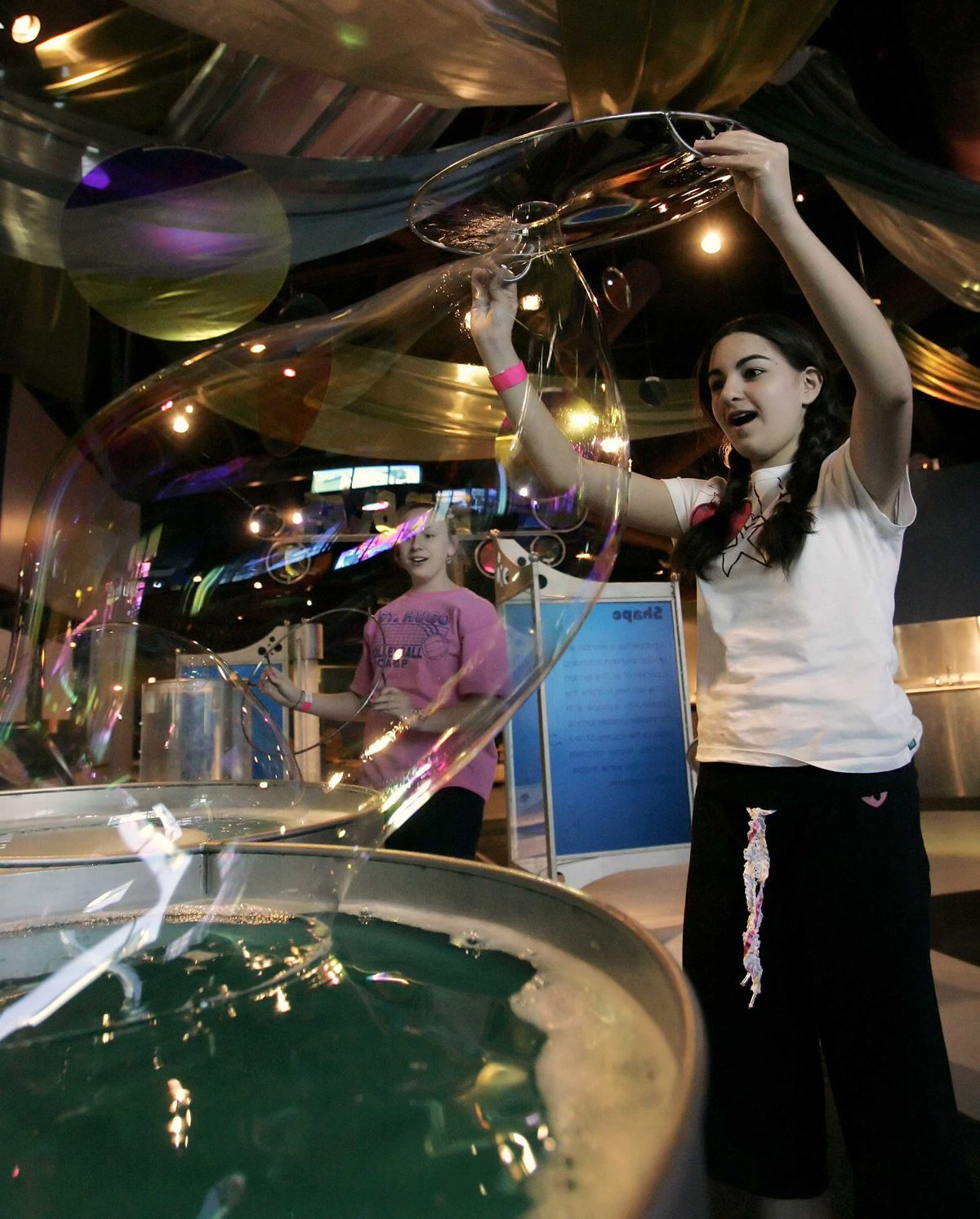Science centers’ funding difficult
Mobius says other cities’ failings avoidable

The goal of Exploration Place in Wichita, Kan., was to generate interest in science, create an attraction in the city’s core and become a source of community pride without the need for annual public subsidies.
But less than five years after the museum opened with great fanfare in 2000, attendance – and revenue – had fallen. Sedgwick County, which includes Wichita, came to the rescue.
Sedgwick County Commissioner Tim Norton said the decision to subsidize the science center was controversial, but he and other leaders decided the museum was making a difference.
“To have a quality of life in your community, we said we need that in our community,” Norton said in a recent interview.
As Spokane leaders consider the creation of the Mobius science center near downtown, the experience of Wichita and a few other cities provides a cautionary tale about financing science museums.
Dave Remington, Mobius Spokane board member, said Wichita’s experience will not be repeated in Spokane. He said Wichita’s museum wasn’t planned properly, a sentiment echoed by Norton. In part, Remington said, Wichita placed too much emphasis on the architecture of the building and not enough on the space inside.
“We don’t want to build a science center that is not sustainable,” said Neil Worrall, a heart surgeon based at Providence Sacred Heart Medical Center and the chairman of Mobius Spokane.
Science centers across the county almost always need more revenue than they take in from admissions and other “earned revenue” such as space rentals. Donations and sponsorships help, but most science museums accept annual subsidies from local or state governments.
Among the 24 museums Mobius studied to help create the business plan it presented last year to the Spokane Park Board, only a few sustained themselves with no or minimal subsidies. A 2008 survey compiled by the Association of Science-Technology Centers, a Washington, D.C., group that represents science museums, showed that the average science museum receives about 20 percent of its funding from public sources.
Mobius Spokane, however, has said it will not need operational subsidies. Supporters note that Mobius Kids, the organization’s children’s museum at River Park Square, sustains itself without annual subsidies.
Some Park Board members have expressed concerns about sustaining a museum on a much larger scale. But Remington, former chief operating officer of Itron in Liberty Lake, said Mobius’ plan is based on the expenses and earned revenue at other science museums.
The museum’s business plan anticipates annual expenses of $1.9 million and revenues of $1.1 million. Most of the gap would be made up with profits from the museum’s proposed Imax theater, which would replace the existing facility at Riverfront Park. The remaining $300,000 would come from grants and donations. An undefined amount could be made through parking fees.
The Mobius board includes Anne Cowles, wife of Spokesman-Review Publisher Stacey Cowles.
An agreement approved by the Park Board this summer could open the door for private development by Mobius on sites north of the museum as a way to earn revenue. In recent months, however, Mobius supporters have downplayed development opportunities and said this week they were re-evaluating the need to maintain private development rights.
While going without public money is uncommon, some science centers do it, including the Arizona Science Center in Phoenix.
Sheila Grinell, former director of the Arizona center, said it’s increasingly difficult for museums to persuade government leaders to contribute annually.
“Centers are getting more and more enterprising about ways to sustain” their operations, Grinell said.
Grinell, who wrote a book about starting science centers, said a properly run Imax theater typically will make a profit, but not as much as when the technology was fresh. She said many museums partner with other institutions such as public TV stations to save costs or generate revenue.
Spokane leaders have long considered the creation of a science center. In the mid-1990s, voters rejected a proposal to build a science center in the middle of Riverfront Park. Four years later, voters agreed to buy land north of Riverfront Park for a science center.
City leaders said use of the land is the most a science museum can expect from the city, given tight budgets.
Karl Hutterer, executive director of the Santa Barbara Museum of Natural History, said museums must be creative in raising money.
The Santa Barbara museum’s endowment pays about 40 percent of its operational costs – enough to allow it to go without subsidies.
“Any source of funding is ultimately susceptible to fluctuations in the business cycle,” said Hutterer, a former board member of the American Association of Museums. “You want to diversify, just as you want to diversify your stock portfolio.”
Mobius says Imax will provide part of the funding diversity.
In Toledo, Ohio, adding diversity meant asking voters for a property tax.
Toledo leaders opened a science center in 1997 to fill a closed downtown shopping center.
It attracted nearly 3 million visitors in its first decade but failed to generate enough money to keep exhibits fresh, museum officials said.
It closed in 2007 after voters twice rejected new taxes to keep it open. It reopened as Imagination Station this year when voters agreed to pay $5 a year on a $100,000 home.
David Waterman, president of the center’s board, said the museum helps promote the city, which hopes to become a base for solar energy companies.
“It’s very helpful in presenting science in a way that’s fun to kids and to inspire their interest at an early age,” he said.